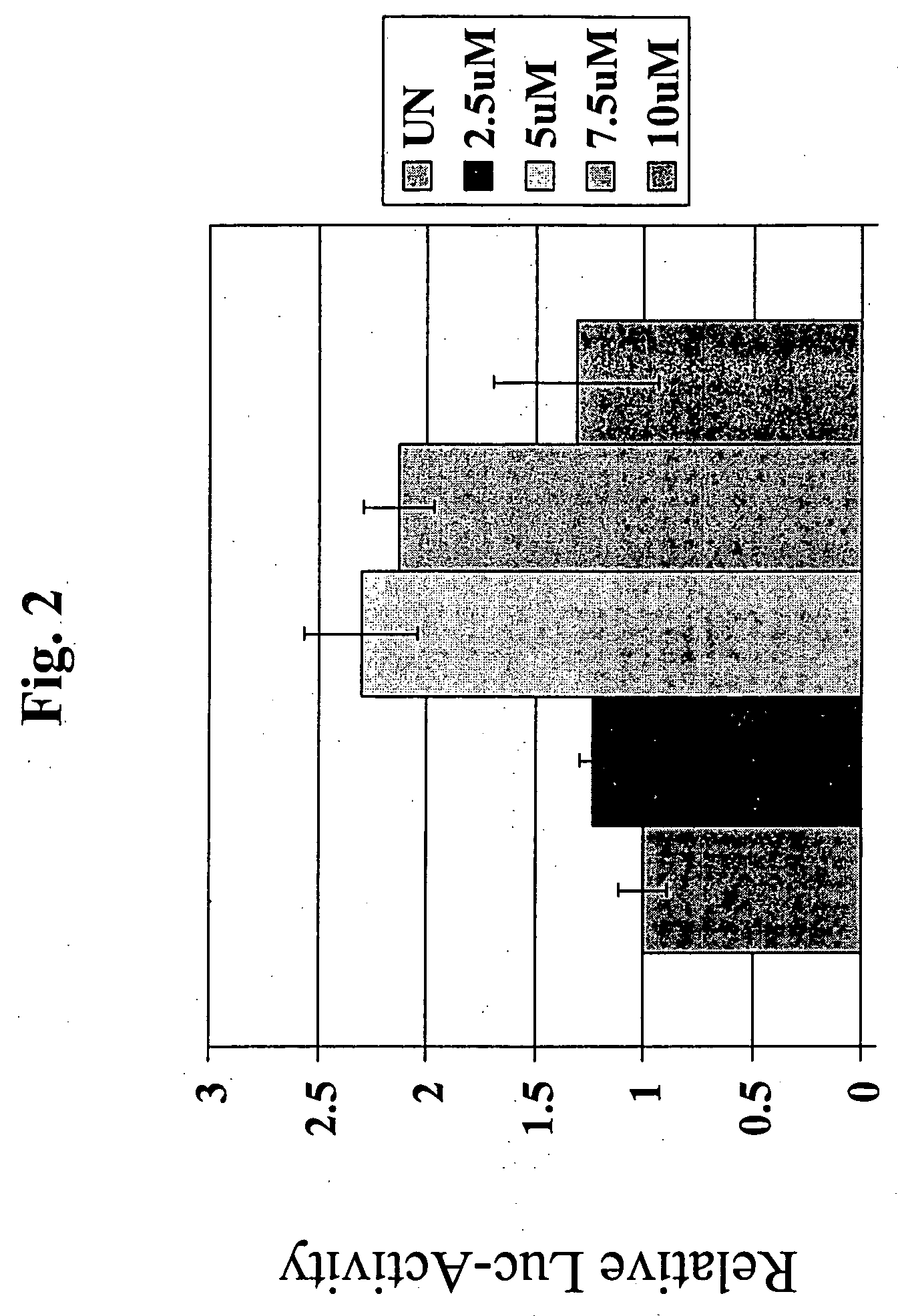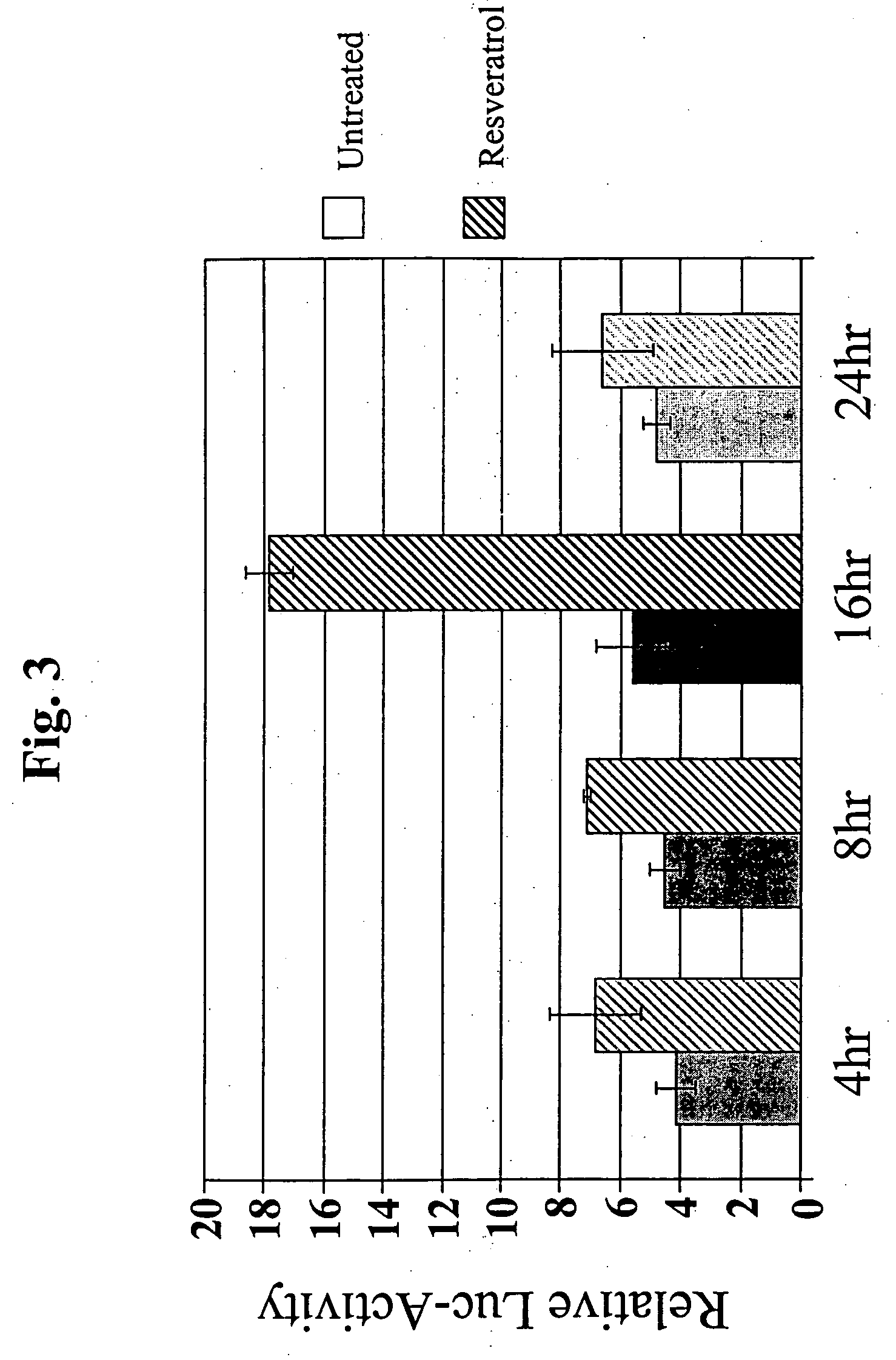Use of resveratrol to regulate expression of apolipoprotein A1
a technology of apolipoprotein and resveratrol, which is applied in the field of resveratrol to regulate the expression of apolipoprotein a1, can solve the problems of increased risk of ischemic heart disease, and increased risk of cvd, so as to increase the apo a1 expression, and increase the circulating hdl level
- Summary
- Abstract
- Description
- Claims
- Application Information
AI Technical Summary
Benefits of technology
Problems solved by technology
Method used
Image
Examples
experiment 1
[0047] Resveratrol treatment of CaCO2 cells, from intestine. This study determined whether resveratrol had an effect on APO AI gene in CaCO2 cells, an intestinal cell line. Cells were grown under conditions recommended by the ATCC and summarized briefly in the methods section. The initial studies examined the potential effects of resveratrol to increase APO A1 expression using histologic analysis. Cells were treated with 5 or 10 μM of resveratrol and then stained for their abundance of APO AI using a commercially available human APO A1 antibody (data not shown). The CaCO2 cells were examined using phase contrast and immunohistochemical staining of APO A1 protein in the absence (untreated) and presence of resveratrol (5 and 10 μM). Resveratrol caused an increase in the abundance of APO A1 signal following exposure to 5 and 10 μM of the agent after 36 hours of treatment. An increase in the level of APO A1 protein expression in the presence of resveratrol was also demonstrated. The re...
experiment 2
[0050] Effects of resveratrol require a fragment of the DNA spanning nucleotides −190 to −170. Since pAI.474-Luc, used in the above studies, was found to mediate effects of resveratrol and this construct contained the rat APO AI DNA fragment spanning −474 to −7, we postulated that a motif or motifs within this segment of the promoter DNA mediates actions of the compound. In order to identify the potential motif(s), separate constructs containing progressively smaller amounts of APO AI DNA were fused to the Luc gene. The activity of each construct was tested by transient transfection assay in CaCO2 cells and then treated with 5 μM resveratrol for a minimum of 16 hours. Results (FIG. 4) showed that the full-length (474 to −7) promoter produced a 2.5-fold induction. Removal of the DNA the −235 or −190 to −7 fragments from the parent promoter did not affect the ability of resveratrol to induce the 2.5-fold increase in promoter activity. In contrast, further deletion with the remaining ...
experiment 3
[0051] Resveratrol increases APO AI protein secreted from CaCO2 cells. This experiment sought to measure whether resveratrol stimulation of transcriptional activity of the promoter in the CaCO2 cells increased the abundance of the APO AI protein, ultimately responsible for the antiatherogenic activity of the gene. Resveratrol increased activity of the APO AI promoter in the pAI.474-Luc construct, a transgene that is introduced into CaCO2 cells by transient transfection but whether it affected activity of the APO AI gene endogenous to the CaCO2 cells was not known. For these studies, CaCO2 cells were cultured as usual and exposed to media containing resveratrol at a concentration of 5 or 10 μM for 36 hours. Llonger exposure of the cells to resveratrol was utilized to allow adequate time for the APO AI protein to be secreted into the media from the CaCO2 cells, and detected. Spent media exposed to the cells for 36 hours was assayed for its content of APO AI protein using western blot...
PUM
| Property | Measurement | Unit |
|---|---|---|
| time | aaaaa | aaaaa |
| time | aaaaa | aaaaa |
| time | aaaaa | aaaaa |
Abstract
Description
Claims
Application Information
 Login to View More
Login to View More - R&D
- Intellectual Property
- Life Sciences
- Materials
- Tech Scout
- Unparalleled Data Quality
- Higher Quality Content
- 60% Fewer Hallucinations
Browse by: Latest US Patents, China's latest patents, Technical Efficacy Thesaurus, Application Domain, Technology Topic, Popular Technical Reports.
© 2025 PatSnap. All rights reserved.Legal|Privacy policy|Modern Slavery Act Transparency Statement|Sitemap|About US| Contact US: help@patsnap.com



